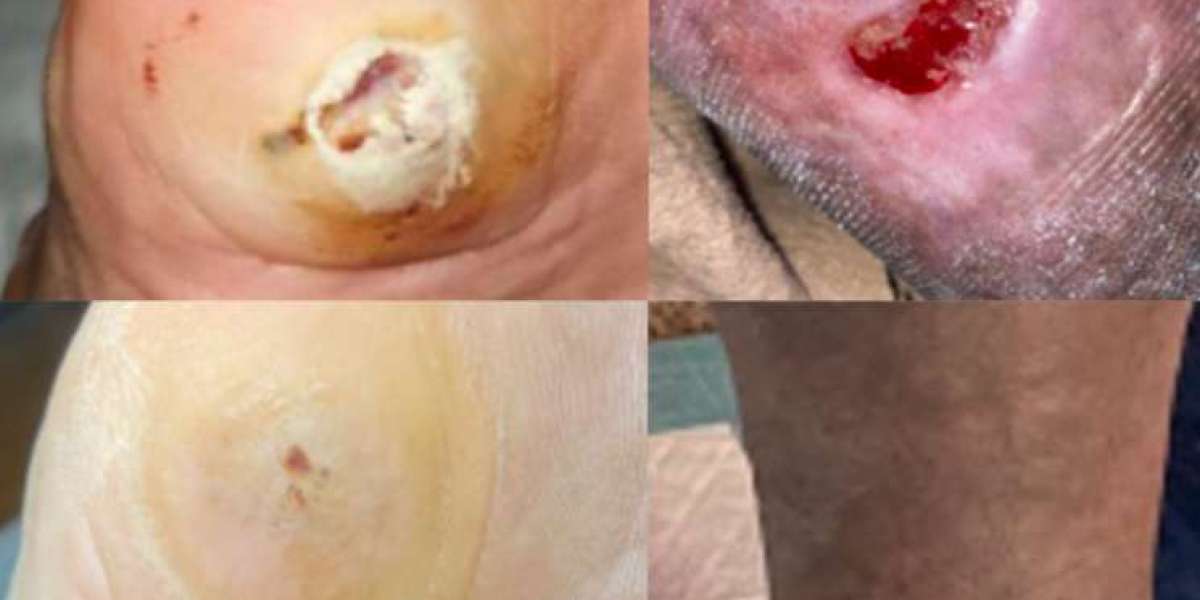Wound care has come a long way from traditional bandages and antiseptics. With advancements in biotechnology and regenerative medicine, amniotic wound care products are rapidly emerging as one of the most promising innovations in modern healing. Derived from the innermost layer of the placenta, these biologically active tissues offer a powerful combination of anti-inflammatory, antimicrobial, and regenerative properties. The result? Faster healing, reduced scarring, and improved outcomes for patients across a wide range of medical scenarios.
This article explores how amniotic wound care products work, why they are effective, and how they are changing the landscape of wound management today.
What Are Amniotic Wound Care Products?
Amniotic wound care products are derived from the amniotic membrane, part of the human placenta. After childbirth, the amniotic tissue is voluntarily donated, rigorously screened, and processed to preserve its biological properties. These membranes are then used in clinical settings as allografts for wound coverage and tissue regeneration.
The key components of these products include:
Extracellular Matrix (ECM): Supports cell migration and tissue growth.
Growth Factors: Stimulate cell proliferation and angiogenesis.
Anti-inflammatory Cytokines: Reduce inflammation and immune response.
Antimicrobial Proteins: Help reduce infection risk.
This combination makes amniotic wound care products highly effective in both acute and chronic wound scenarios.
The Science Behind the Healing
Healing is a complex biological process that involves several phases: hemostasis, inflammation, proliferation, and remodeling. In chronic wounds, such as diabetic ulcers or pressure sores, this cycle is disrupted. Amniotic membranes help restore balance to the wound environment by:
Modulating inflammation: They reduce pro-inflammatory cytokines and increase anti-inflammatory mediators.
Enhancing cellular recruitment: Growth factors attract stem cells and fibroblasts to aid tissue repair.
Promoting angiogenesis: New blood vessels form to support tissue oxygenation and nutrient delivery.
Reducing fibrosis: They decrease excessive scar tissue, leading to better aesthetic and functional outcomes.
Because of these mechanisms, amniotic wound care products not only accelerate healing but often improve the quality of the repaired tissue.
Applications in Clinical Practice
Amniotic wound care products are now being applied across a wide spectrum of medical conditions. Some common use cases include:
Chronic Wounds
Diabetic foot ulcers
Venous leg ulcers
Pressure sores
These wounds often fail to heal with conventional therapies. Studies have shown that amniotic membranes reduce healing time and improve wound closure rates when used alongside standard care.
Surgical Sites and Burns
Skin graft donor sites
Burn injuries
Post-operative wound healing
Amniotic products provide a protective barrier that supports tissue regeneration while minimizing the risk of infection or dehydration.
Trauma and Orthopedic Use
Soft tissue injuries
Tendon and ligament repair
Due to their anti-scarring properties, these products help restore function with minimal fibrosis.
Advantages Over Traditional Wound Dressings
While conventional dressings may protect the wound and absorb exudate, they lack biological activity. Here’s how amniotic wound care products stand apart:
Feature | Traditional Dressing | Amniotic Wound Care Product |
Antimicrobial | Sometimes | Yes (natural antimicrobial peptides) |
Biologically active | No | Yes |
Promotes tissue regeneration | No | Yes |
Reduces inflammation | No | Yes |
Scar reduction | Limited | Yes |
These advantages make them particularly beneficial in treating wounds that are slow to heal or at high risk of infection.
Regulatory and Ethical Considerations
Amniotic tissue allografts are regulated by the U.S. Food and Drug Administration (FDA) under guidelines for human cells, tissues, and cellular and tissue-based products (HCT/Ps). Only tissue banks compliant with stringent safety protocols can process and distribute these grafts.
From an ethical standpoint, the tissues are sourced from consenting mothers after full-term births and are subject to rigorous donor screening. There is no harm to mother or child, making this a sustainable and ethical medical resource.
Future Potential and Ongoing Research
Research into amniotic wound care products continues to expand. Current studies are exploring enhanced formulations, such as:
Cryopreserved amniotic membranes for improved shelf life and biological activity.
Dual-layer membranes for added structural support.
Combinations with stem cells or exosomes to amplify regenerative potential.
As clinical data grows, healthcare providers will gain even more insight into optimal usage patterns and broader applications.
Patient Outcomes and Case Studies
Patients treated with amniotic wound care products often report:
Less pain during dressing changes.
Shorter overall healing time.
Improved mobility and function.
Fewer infections and complications.
For instance, in a multicenter clinical trial on diabetic ulcers, patients using amniotic membranes achieved a 90% wound closure rate within 12 weeks—significantly faster than those using standard care alone.
Integration Into Standard Care Protocols
Amniotic membranes are now integrated into many wound care clinics, podiatric practices, burn units, and orthopedic departments. They can be used in conjunction with:
Negative pressure wound therapy (NPWT)
Debridement and cleaning procedures
Antibiotic regimens
Compression therapy
The flexibility of application—either as sheets, injectables, or topical gels—also enhances their usability in various settings.
Challenges and Considerations
While the benefits are clear, challenges remain:
Cost: Amniotic grafts can be expensive, although long-term savings from reduced healing time often justify the expense.
Storage: Some products require refrigeration or cryopreservation.
Insurance coverage: Not all insurance providers currently reimburse for these advanced therapies, although this is improving as more data emerges.
Educating both providers and patients is critical to overcoming these hurdles.
Conclusion: A Transformative Force in Regenerative Medicine
Amniotic wound care products represent a major step forward in wound management. By combining natural healing agents with the safety of ethical sourcing and advanced processing, these products offer a regenerative solution that aligns with the future of personalized medicine. Their ability to treat chronic, surgical, and traumatic wounds with reduced pain, faster healing, and better aesthetic results makes them indispensable in modern clinical practice.
As science continues to uncover the full potential of amniotic membranes, one thing is clear: the age of biologically active wound care is here—and it’s healing patients like never before.








